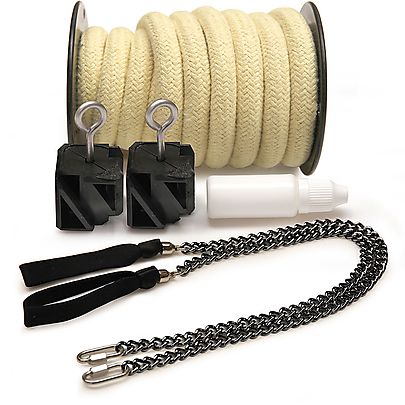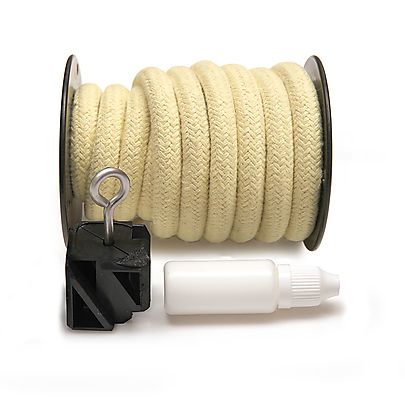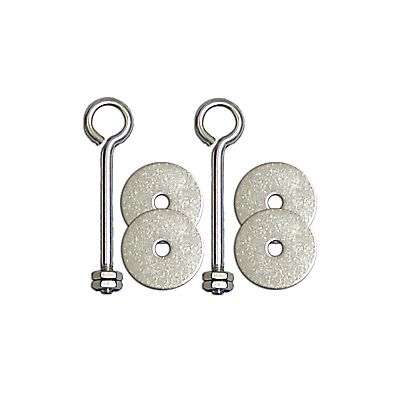
Tube core Fire Head.

 The tube core has the wick rolled around it and it is held by what ever means you feel comfortable with. Some use wire, screws or even KEVLAR ® thread. This arrangement is very common on staff as you already have a tube/pole to wrap the wicking around. in most cases you are able to remove the wick and roll back on in the opposite direction so fresh wicking is again on the outside of the head. Any exposed metal parts on the outside of the head can get very hot and may well be able to burn the skin should you come in contact with it.
The tube core has the wick rolled around it and it is held by what ever means you feel comfortable with. Some use wire, screws or even KEVLAR ® thread. This arrangement is very common on staff as you already have a tube/pole to wrap the wicking around. in most cases you are able to remove the wick and roll back on in the opposite direction so fresh wicking is again on the outside of the head. Any exposed metal parts on the outside of the head can get very hot and may well be able to burn the skin should you come in contact with it. Pros:
- Easy to add to staff/baton poles
- Can be stitched to hide hot metal parts eg. screw heads
- Stitching can be replaced with screws
- Screws enable ease to replace wicking
- Wicking is less likely to degrade from flexing of the wick fibres
- Ability to turn wicking inside out by undoing screws
- Reduced capillary effect to the edges of the tube with longitudinal weave
- Extra work in making a tube to wrap the wicking around
- 2 to 4ft x 2" KEVLAR ® wick (or 2.5" or 4") 1/8" thick wick per fire head
- 1 x 3/4" diameter aluminium tube 1" longer that the width of the wick used per POI head or a longer tube to use as a staff/baton
- 1 x wooden dowel inserted into pipe for woodscrews to screw into
- 3 x 1/8" self-drilling pan head woodscrews per head
Accordian fold Fire Poi Head.


The Accordion fold is one length that is folded back upon itself to create a stack. The wick is folded and then folded back over its self one end at a time. Once the stack is created secure the stack through the middle with something like an eyebolt with large washers and double nuts. You can make the hole for the eyebolt by using a philips screw driver pushed through the wick. Do not use a drill. Eye on bolt enables ease of attachment of cables or chain. You can secure with other means and have as many folds as you want.
Pros:
- Easiest head to make
- Can use wire or bolt assembly
- Improved capillary effect for fuel traveling to two of the four side edges
- Can be stitched to hide hot metal parts eg. additional fold stitched over bottom nut and washer
- Uneven capillary effect to two of the side edges of the fold
- Wicking is more likely to degrade faster from flexing of the edge wick fibers however wick can be stiffened using PVA (white school glue).
- 2 to 8ft x 2" KEVLAR ® wick (or 2.5") 1/8" thick wick per
- 1 x Cathedral stainless steel eyebolt kit
Cathedral fold #1 Fire Poi head.


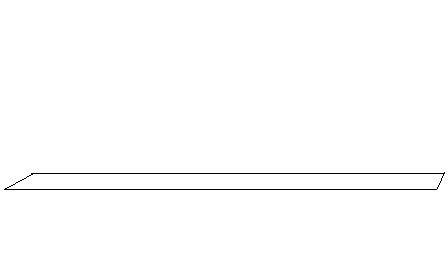
>One method of making a Cathedral fold fire poi head is shown above. You use one piece of cut wick to make. Begin laying the wick out as shown below and then fold each in turn over the other creating a stack. The stack can then be eye-bolted with large washers and double nuts to prevent wicking coming apart. Fold ends of wick over to protect frayed edges. Cut edges of wick can be also hardened using PVA (white school glue).
Pros:
- Easy head to make
- Can use wire or bolt assembly
- Improved capillary effect for fuel traveling to all four side edges
- Can be stitched to hide hot metal parts eg. additional fold stitched over bottom nut and washer
- Wicking is more likely to degrade faster from flexing of the edge wick fibers however wick can be stiffened using PVA (white school glue).
- Slightly harder to make hole through the middle because of the 45 deg. fold at the bottom.
- 4 to 8ft x 2" KEVLAR ® wick (or 2.5") 1/8" thick wick per head
- 1 x 1/8" eyebolt per head
- 2 x 1/8" nuts per head
- 2 x 1 1/4" fender washers per head
Cathedral fold #2 Fire Poi head.

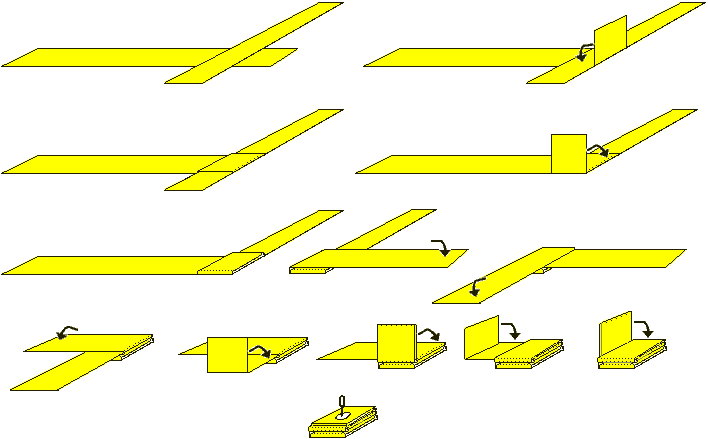
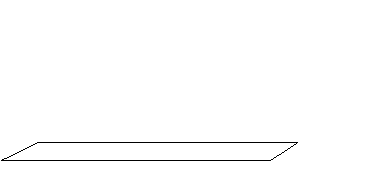
Another method of making a Cathedral fold Fire Poi head is shown above. You use two pieces of cut wick to make. Begin laying the wick out as shown below and then fold each in turn over the other creating a stack. The stack can then be eye-bolted with large washers and double nuts to prevent wicking coming apart. Fold ends of wick over to protect frayed edges. Cut edges of wick can be also hardened using PVA (white school glue).
Pros:
- Easy head to make
- Can use wire or bolt assembly
- Improved capillary effect for fuel traveling to all four side edges
- Can be stitched to hide hot metal parts eg. additional fold stitched over bottom nut and washer
- Wicking is more likely to degrade faster from flexing of the edge wick fibers however wick can be stiffened using PVA (white school glue).
- 4 to 8ft x 2" KEVLAR ® wick (or 2.5") 1/8" thick wick per head
- 1 x Cathedral stainless steel eyebolt kit
Monkey Fist Knot Fire Poi head



The monkey fist knot another way of making a fire POI head. The spherical shape give the best volume to surface ratio when using an adsorbent core. However the knot should have a rigid core inserted within to keep the knot from flexing and coming undone. A non flexing anchor should be used to attach the chains to the core as this prevents friction against the rope edges, however wick can be additionally protected with some PVA (white school glue). The two ends of the cord used to make the knot are cut flush with the knot and secured to the core.
Pros:
- Appearance of a fire meteor
- Can use wire or bolt assembly
- Improved capillary effect for fuel traveling within the rope to all edges
- Less flexibility improves wick life
- Not as easy to make as the animation shows. Requires a lot of strength to pull knot tight.
- A few feet of rope is left unused after tightening the knot.
- Quite a hard object to hit your body.
- 12ft x 3/8" Kevlar ® rope wick per fire head (once tightened you will have 4ft left outside of the knot)
- 1 x wooden core 1 1/4" diameter per head
- 1 x 3/16" eyebolt with two nuts per head
- 16ft x 1/2" Kevlar ® rope wick per fire head (once tightened you will have 5ft left outside of the knot)
- 1 x wooden core 1 3/4" diameter per head
- 1 x 3/16" eyebolt with two nuts per head
Which fire poi head is the best?
Maybe we will look at which is easier to create first. If you are making a staff or fire stick then wrapping the wick around the tube core is going to be the easiest as you already have the tube to start off with. If you are making a FIRE POI head then Accordion or Cathedral will be easier to make up.Flame size and duration?
This will ultimately come from the combination of speed of swing, air flow around the fuel, altitude above sea level, temperature, fuel type, fuel amount, type of wick, capillary effect of the weave and the surface/volume ratio of the wick. These will all effect the Air and Fuel mix supplied to the flame and hence how quickly the fuel will get used up.For a long burn with a big flame you will require a larger volume of wick to store the fuel and a large surface area for the air and fuel to mix.
Cathedral and Accordion folds will have more exposed surface area depending on the tightness and compression of your fold. Compress too much and less fuel will be soaked and you will need longer fuel soaking times. Too loose and the wick will breath more and provide more air to the flame, making a hotter and larger flame, and using up your fuel more quickly and resulting in the flame size being less consistent getting smaller as your burn continues.
See also Safety Articles, Which fuel?, Which material to make a wick?, How to make your wick last longer, What is KEVLAR ®? All about metal parts used in fire twirling equipment

